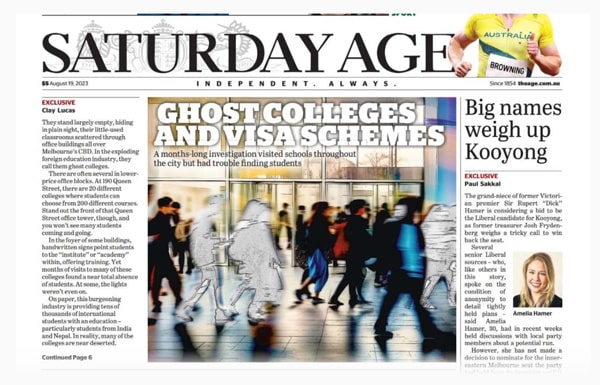The new branch campus model: expand at home, compete everywhere
The year 2012 will be remembered for many things in international education circles, among them:
- Increasing competition between countries for market share of students, with regional hubs emerging (e.g, Hong Kong and Malaysia);
- The diversification of market players, with far more friction between private and public providers;
- The rise of MOOCs and online delivery models in general;
- A sense of urgency to review, tweak, or overhaul business models to adapt to the changing landscape;
- A drive to niche areas of focus (in terms of market, programmes, and/or delivery models) in order to differentiate the university/college brand.
In short, it has been a year of disruption, a year when every institution – whether elite, niche, public, private, large or small – has been encouraged to consider its operations and programmes. One apparent result of all this is that institutions are showing more interest in extending their brands to target more student segments or more markets (e.g., international branch campuses, twinning programmes, and dual/joint degrees) through a variety of subsidiary operations or partnerships. With regard to the latter, we can look to the UK, where universities are setting up institutional subsidiaries – private institutions linked to the main university brand designed to attract new revenue streams – by targeting new or different student segments – and compete in a more diverse marketplace. For example, the University of Hertfordshire is partnering with further education institution Oaklands College to launch a non-profit private college in 2013 targeted at part-time students who are also working; the proposed name for the college is St Albans University College. The new college will teach mostly business-related subjects and offer classes in the evening and weekends as well as by distance. University of Hertfordshire vice-chancellor Quintin McKellar acknowledged to the Times Higher Education that the launch is “certainly happening at a time when we anticipate private providers will come into the market.” Subsidiaries are also happening in the US: Boston-based Northeastern University is launching master’s-based subsidiaries with courses focused on relevancy to the local area; there is also one in Charlotte, North Carolina and another opening soon in Seattle, Washington. Universities with subsidiary plans would argue that they are merely reaching out to more student segments to offer quality education – moving from one brand to a brand extension, as it were – and extending accessibility to education, if some of the new student segments would not have been able to afford or fit in traditional university education. This is all well and good, provided that:
- The university does not over-reach in its ambition and operating capacity;
- The institution feels confident in keeping its core brand strong and in extending a comparable quality of programmes and services to its new subsidiaries;
- Students at subsidiaries are protected by sufficient quality control mechanisms.
and Richard Hall go into greater depth on each of these issues, and both take the perspective that the heightened commercialism they perceive in such subsidiary models is seriously endangering the higher education landscape. Altbach, for example, comments in Inside Higher Ed: “With persistent pressure for increasing income, entrepreneurial universities may pounce on any new market niche if it promises potential students.” However, and for all of the reasons we noted at the outset of this article, more and more institutions will actively consider new delivery models, partnerships, or subsidiaries going forward. And among them will be institutions that extend their brands effectively across student segments and/or international markets: with integrity, with solid financial backing, and appropriate quality controls. As Ernst and Young assert, the traditional university model of the past is going to work for fewer and fewer institutions, and as we have reported on previously, students are demanding more custom-tailored, flexible, and technology-enabled products. At the end of the day, educational institutions have many good reasons to be innovative and entrepreneurial right now, and we should resist the temptation to oversimplify the positive or negative impacts on the nature and quality of higher education. The results will be seen over time, and often on an individual, case-by-case basis. What seems clear for the moment is that those charged with recruiting students to new subsidiaries or partner programmes will need to give considerable weight to quality assurance and to carefully match student expectations to the study experience on offer. Those whose market position is challenged by new subsidiaries or partnership programmes may well need to adjust their recruitment strategies in the face of these additional dimensions of domestic or international competition. And for many institutions and agents across the international education landscape, new opportunities for partnerships and collaboration are clearly afoot.













